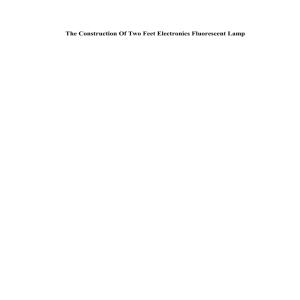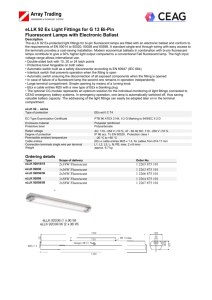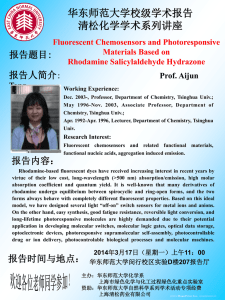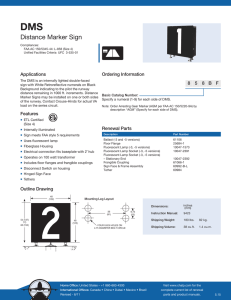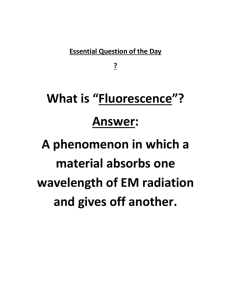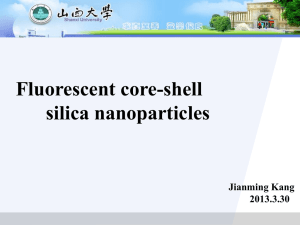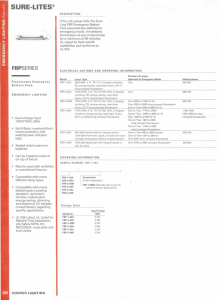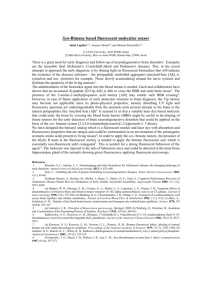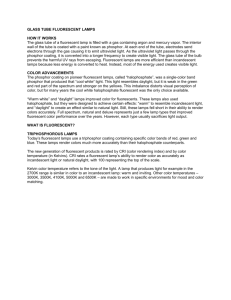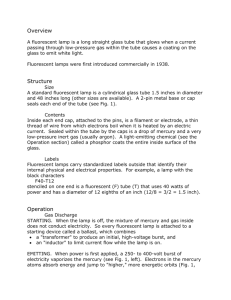COMPACT FLUORESCENT COMPACT FLUORESCENT BASICS
advertisement
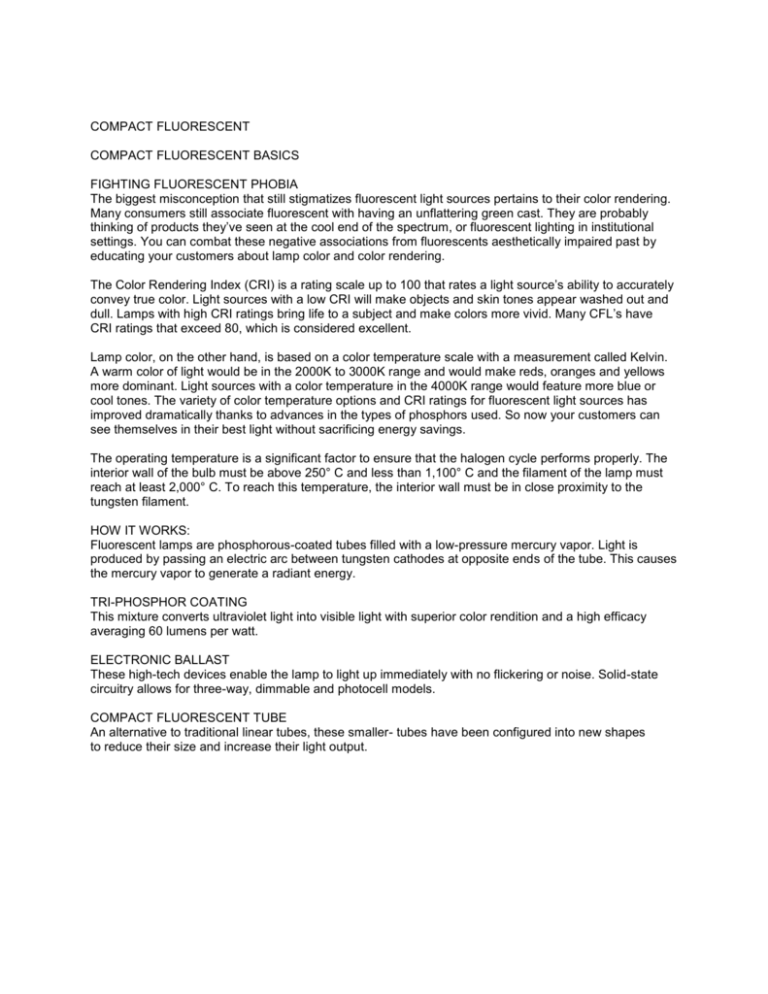
COMPACT FLUORESCENT COMPACT FLUORESCENT BASICS FIGHTING FLUORESCENT PHOBIA The biggest misconception that still stigmatizes fluorescent light sources pertains to their color rendering. Many consumers still associate fluorescent with having an unflattering green cast. They are probably thinking of products they’ve seen at the cool end of the spectrum, or fluorescent lighting in institutional settings. You can combat these negative associations from fluorescents aesthetically impaired past by educating your customers about lamp color and color rendering. The Color Rendering Index (CRI) is a rating scale up to 100 that rates a light source’s ability to accurately convey true color. Light sources with a low CRI will make objects and skin tones appear washed out and dull. Lamps with high CRI ratings bring life to a subject and make colors more vivid. Many CFL’s have CRI ratings that exceed 80, which is considered excellent. Lamp color, on the other hand, is based on a color temperature scale with a measurement called Kelvin. A warm color of light would be in the 2000K to 3000K range and would make reds, oranges and yellows more dominant. Light sources with a color temperature in the 4000K range would feature more blue or cool tones. The variety of color temperature options and CRI ratings for fluorescent light sources has improved dramatically thanks to advances in the types of phosphors used. So now your customers can see themselves in their best light without sacrificing energy savings. The operating temperature is a significant factor to ensure that the halogen cycle performs properly. The interior wall of the bulb must be above 250° C and less than 1,100° C and the filament of the lamp must reach at least 2,000° C. To reach this temperature, the interior wall must be in close proximity to the tungsten filament. HOW IT WORKS: Fluorescent lamps are phosphorous-coated tubes filled with a low-pressure mercury vapor. Light is produced by passing an electric arc between tungsten cathodes at opposite ends of the tube. This causes the mercury vapor to generate a radiant energy. TRI-PHOSPHOR COATING This mixture converts ultraviolet light into visible light with superior color rendition and a high efficacy averaging 60 lumens per watt. ELECTRONIC BALLAST These high-tech devices enable the lamp to light up immediately with no flickering or noise. Solid-state circuitry allows for three-way, dimmable and photocell models. COMPACT FLUORESCENT TUBE An alternative to traditional linear tubes, these smaller- tubes have been configured into new shapes to reduce their size and increase their light output.
